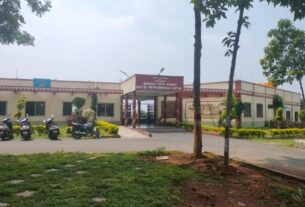Experts say that digitization will help in bringing young people to experience the art displayed in the government museums.
A.Rabik looked over and watched his sons looking at the weapons section at the Government Museum on Kasturba Road. It had taken him quite an effort to get them to accompany him to the museum, despite the fact that they were interested in learning. “I think digitization would help a lot in attracting the younger generation. If my kids could check out the museum’s displays on the website, they would be more excited to come here in person.” It won’t be long before people can see the website before they visit the 170-year old museum, says Kavya Shree, Assistant Director of the Government Museum. The state has just given the museum Rs. 8.5 crores to modernize it. Kavya Shree hopes to spend a lot of it on digitization. “We are mainly focusing on the digitization part. Digitization will be done to target students and researchers for their study purposes.” However, she feels that the money is not enough. So, the museum has also written to the central government for more funds.
Kavya said, “The renovation of the museum will be done in two parts, the structural and the curation part. The curation part will involve 360 degree panorama images. The artifacts that are displayed now in the museum have no information displayed for the public to read. Through digitization, we will have all the information about the artefacts.”
Currently, the museum has no website that might inform visitors about its displays. The Karnataka tourism
website does not have any information or images of the collection displayed in the Government museum. It only has a section that talks about museum timings.
The Ministry of Culture, through various schemes has mandated the development and upgradation of the museums to make them more accessible to the public. It has said that artifacts in museums should be digitized and uploaded to the museum website. The ministry says thattechnical specifications of the museums should be documented in multimedia and should have 360 degree panorama views integrated. A 360 degree panorama image gives maximum viewing angles and more dimensions in an image. These images are controllable and the user can move the image right and left or even up and down.
Michael Stuffer, a German visiting Bengaluru for the first time, was keen to know about the artefacts displayed in Government Museum. He said, “For foreign visitors, getting prior information from a website would be a good thing. When I visit museums, I want to physically see the collection but the websites will give me detailed information of a particular display. The digitization would offer me much more information and details of the displays in a museum.”
Other, private museums, however, focus on digitization. Museum of Art and Photography (MAP) has a website where it has showcased its digitized collections. Each display has information of the artwork displayed on the website.
Vanita Vishwanath, a visitor at MAP museum said, “The use of digitized features of the artefacts on the website of museums sounds great. But I think it would attract younger generations than people who are older like me or who are more interested in coming down to the museums and consuming the art with their own eyes.”
Alisha, another visitor at MAP said, “Since, I have come to Bangalore for the first time I wanted to check out MAP. When I went through its website, I saw a lot of reviews, but not all of them were positive. When we get to check out every little detail of the art piece by zooming in and hovering above it, it generates more interest.” She said that it is a cool feature and it would attract a lot of younger generations who are interested in studying or knowing more about art.
Raj Soni, an art teacher said, “I ask my students to look at the digitalized artworks which provides them more details while practicing. The zoom in and out facility of the digitalized artworks does not pixelate and the details are very clear.”
Susmita Mistry, second year student of Artificial Intelligence and Data Science at Datta Meghe College of Engineering, Navi Mumbai said, “Separate access can be provided for Indian and foreign visitors which will help in generating funds for the maintenance of the website. In depth details of certain artifacts can be put under subscription walls This will help in preserving the artefacts and avoiding any misuse of the information provided.”
Mistry added that collecting some amount of charges can also act as maintenance fees which can be utilized to keep the website updated. She said, “The frequent updates can help in avoiding the server from crashing and will also help in the website’s search engine optimization (SEO) ranking. To help students who are doing specializations, the websites can provide some concessions as well.”
Dr. Baisakhi Mitra, Head Of Department, Department of Museology, Rabindra Bharti University, Kolkata, said, “Researchers and students can easily access well documented and catalogued information from any corner of the globe. Digitization will help and make the tracking process of the collection easier. Tourists can see online versions and get attracted towards visiting the museums to see the original artifacts.” She added that this will help in boosting the tourism of the state as well.







